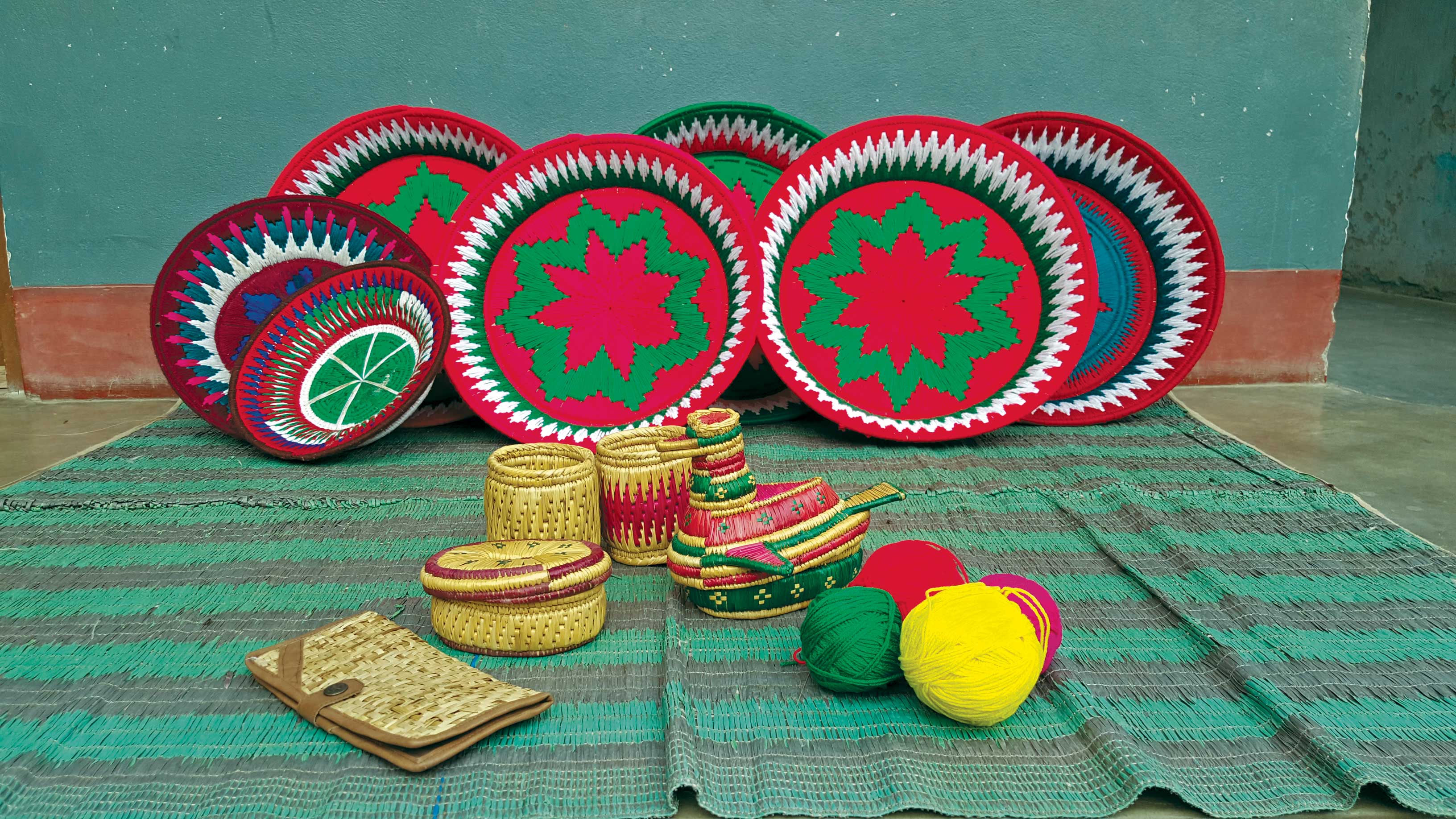He was born to play with clay. The signs were already there even as a child. Apparently, during his annaprashan (rice taking ceremony at six months), his tiny hands reached out to grasp clay instead of the other items placed before him. He sculpted his first statue when he was just eight years old and he decided to turn professional when 17.

The congenial artist
The consolation prize in 1973 during the Children’s Sculpture Competition was a precursor of greater things to come. In 1994, he was declared Best Artist by the Art Forum. In 1996, he won the first prize at the National Art Competition. In 2000, he received the Arniko Art Award and Gold Medal. In 2005, he was awarded the Creative Artist of the Year title by the Nepal Art Society. In 2005 also, he won the Contemporary Sculpture Special Award in the National Art Competition. Meet Gopal Kalapremi – Nepal’s foremost ceramic sculptor.
His first exhibition was ‘Peace from Love’ in 1998. On day one itself, 90% of the exhibits were sold. He is the founder and president of Kids Energy of Year and the Art Teacher Association as well as the founding member and vice president of Sutra International Artist Group. His Gokem Art Ceramic Studio in Maharajgunj is at most times, chock-a-block with many finished and unfinished works. Many are by students who spend productive time here “playing with clay,” according to Kalapremi. He is that sort of person – taking most things in a lighter vein. He has done many works for free, including the Bhanubhakta statue in Bhanubhakta School and the bust of Kantiswari in Kanti Sanskritik Kendra. He is not just a sculptor; he loves to teach as well and has been doing so for almost three decades now. He is a fine arts teacher at the Lalit Kala Campus, the Ceramic Training Centre of the SOS Village in Thimi, Bhanubhakta Memorial School and Chand Bagh School. He is a good teacher – two of his former students who stand out, are the artists Juju Kazi Maharjan and Silasa Rajbhandari.

Some of Kalapremi’s striking clay creations on display
‘The Muse’ in 1999, ‘Millennium’ in 2000, ‘Kalapremi with Students’ in 2001, a solo in Delhi in 2003 and ‘The Bottle’ in 2005 are some of his notable exhibitions. But it was ‘Gold Fish’ at the Bamboo Art Gallery in 2001 that really stood out for the sheer inventiveness of the sculptor’s nimble hands and fertile imagination. Earth, wax, metal, sand, saw dust, gold leaves and wire objects – these went into its making. ‘Humans, like fish, are feisty, audacious, full of greed and with an insatiable desire that always longs for more’ – this philosophy was the underlying theme. In 2005, his ‘Darker Days of my Country’ used the ancient Japanese technique of Raku (white drawings on black ware). He also participated in ‘Khoj,’ an international residency program. The sculptor is a poet, too, besides authoring a couple of books on sculpting in clay. He has also helped organize a Ceramic Art Exhibition in which almost 55 artists were involved.
His ‘Kumudini’ series was exhibited in 2006 to rave reviews. Unlike the more abstract works of many nouveau sculptors, his are viewer-friendly in that they can be recognized for what they are supposed to be. No doubt there are exceptions – his installation, ‘Balchi, Fuabanjar, Sabhadan,’ during the Sutra International Art Workshop (July 2006), required deeper thoughtfulness on the part of the observer. Perhaps that’s part of his progress as an artist which, one must say, is in tune with his receiving continuing accolades and his ongoing activities. He was honored by the Korean government as an ‘Asian Master’ during his 6 month stay there holding exhibitions. More recently, he had another solo exhibition at the Siddhartha Art Gallery and has also published a book. Around the same time, he, along with Manish Lal Shrestha and a Japanese artist, held an exhibition at the Japanese Embassy. Similarly, he, along with another Japanese ceramic artist, held an exhibition on the tourism board premises in the recent past. As a teacher, he has held a residency program at his home for some French artists and, with his sculpture students of Kathmandu University (KU), held a master-student exhibition at the Siddhartha Art Gallery. Similarly, along with an Italian ceramic artist, he has conducted a workshop recently for KU and SOS students at the SOS Village in Thimi.
Kalapremi is, of course, a very busy artist. He is also an immensely popular man both with peers and colleagues as well as with his many students. His geniality is what draws people towards him just as his abilities as a sculptor draws admirers from near and far. But, although he may seem to be easy going and amiable, he is quite passionate about his particular craft and says, “Clay is life. It can be molded as per the artist’s desire.”










